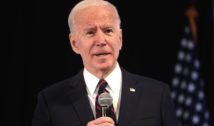
U.S. Supreme Court with decide on a record breaking number of religious cases this year
- By Alison Lesley --
- 06 Feb 2015 --

The Supreme Court is set to take on three religious cases this year instead of the usual one case per year.
2015, as it appears, is going to go down in the books as having the most religious cases so far for the Supreme Court.
This is so, as the Supreme Court, which normally only preside over one religious related case each year, is set to take on three before the close of the years term, come June or early July.
Of the three religious cases for the year, the High Court has most recently given a ruling on the Holt v. Hobbs case, which culminated in the extension of the religious liberty of prison inmates.
In the weeks to come, the Supreme Court will look into a case between Abercrombie & Fitch and the EEOC, which borders on “Religion and Employment.” Then, hopefully, before the Court goes into recess, they will wrap up things with a hearing on “Religion and Employers,” which is a challenge on the Affordable Care Act’s contraception mandate – that is if they agree to squeeze that into their schedule for the year.
Religion and Prison
In this case, the Supreme Court ruled unanimously in favor of a Muslim inmate, stating prison officials in Arkansas had violated his constitutional rights in regard to his religion and Prison rules.
The Muslim in question was prohibited from growing a half-inch beard, with the Arkansas officials arguing to the court that it constitutes a breach of Prison security protocol, stating that it could serve as a cover for smuggling contraband. The Supreme Court shot this defense down, stating that Prisoners are free to express their religious liberty as long as it does not interfere with the effective administration of the prison.
Religion and Employment
Next to be struck off the docket is the Abercrombie & Fitch case, as the Equal Employment Opportunity Commission (EEOC) takes on the clothing retailer for their stringent work dress code policy which prevented Samantha Elauf, a Muslim woman, from being employed because she wears a headscarf, or hijab.
The EEOC, which is to represent Samantha on the February 25 hearing, is agitating a perceived religious discrimination against their client, even as Abercrombie & Fitch is maintaining that Samantha Elauf did not categorically state that she needs to wear the hijab for religious reasons.
The EEOC is pressing on the fact that a worker’s religious rights and liberty should not be waived simply because the worker failed to assert it. A&F on the flipside is saying that there was no way they could intuit Samantha’s religious needs.
The Abercrombie & Fitch work dress code policy bars staff from donning a hat or any form of headgear to work.
Religion and Employers
This one, if decided on by the Court in this current term, will be a back-to-back ruling on the case, as it has to do with the Affordable Care Act (ACA) which was ruled in favor of employers last year. The ruling by the Supreme Court had freed up owners of closely held, for-profit businesses, from providing their employees with free contraceptive services if it clashes with their religious beliefs.
The bone of contention this time is if religiously affiliated nonprofits, such as hospitals and schools, are to be obliged or not in the ACA.
The Affordable Care Act exempts religious houses from the mandate, but religiously affiliated institutions such as schools or health care centers that are into social welfare services, are treated differently. They are required to provide the government with the name of their insurance provider, which is obliged to create a separate policy and to pay for contraceptive services for employees who want them.
However, some religious institutions that fall under the stated category are opposed to the government on the policy, putting forward an argument that even by providing the government with the name of their insurance company, they are practically involved in providing contraceptive services.
As it stands now, the Supreme Court has the ultimate call on this, as lower courts have ruled both ways on the ACA case in the past.




















